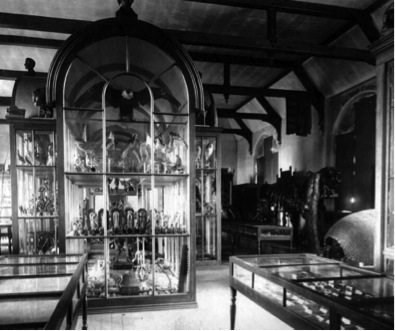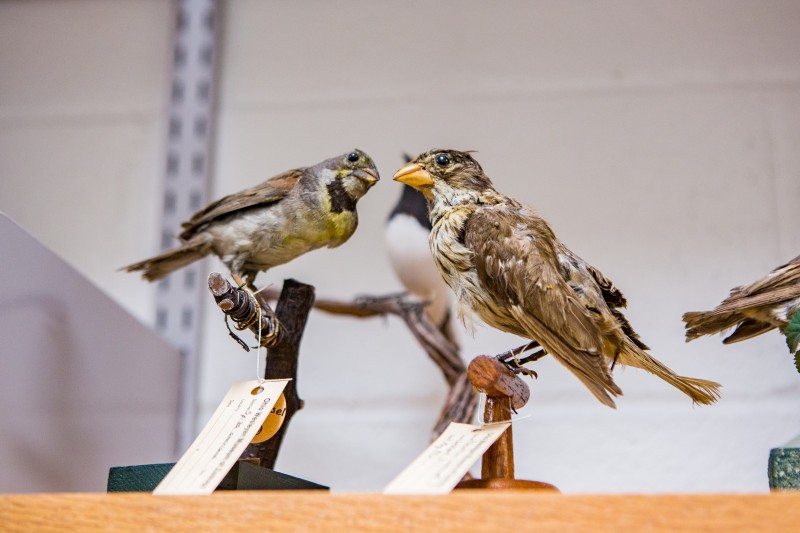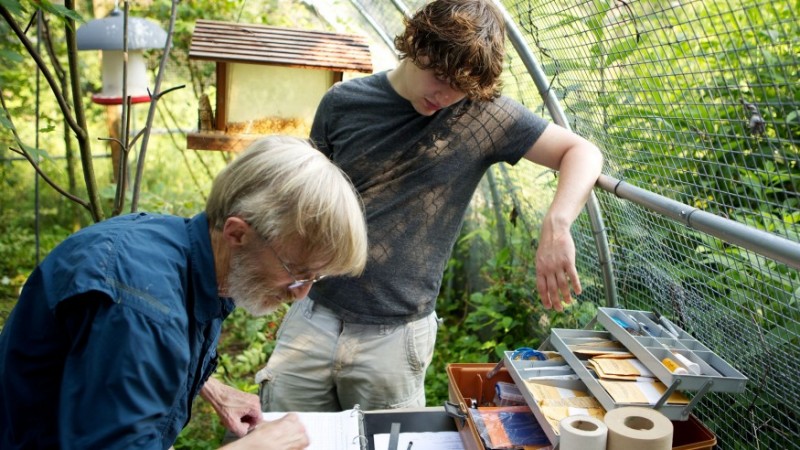OWU Natural History Museum
The OWU Brant Museum of Zoology continues to play an integral role in the education of science and other students.

The OWU Brant Museum of Zoology has impacted thousands of students during its nearly 150-year history.

The origins of the OWU natural history museum date back to the late 1850s, when the University's small collection of natural history specimens, Paleozoic fossils, Ward paleontological casts, minerals, and more was housed in Elliott Hall and Thomson Chapel.
Frederick Merrick, president of Ohio Wesleyan between 1860 and 1873, is credited with founding the museum. Edward T. Nelson, Ph.D., professor of natural history, served as its first director. The founding coincides with the University acquiring the Prescott collection of shells, and Nelson regularly took students by train to the East Coast to collect shells, his passionate interest.
When "Science Hall," now known as Merrick Hall, was opened in 1873, the museum's public and research collections were housed on its third floor.

Later, Edward L. Rice, Ph.D., professor of zoology, expanded the Museum's collections of birds and mammals and began collecting fish, amphibians, and reptiles.
With the opening of Bigelow-Rice Hall in 1962, the museum was moved, and zoology professor William Hahnert, Ph.D., was tasked with refining its collections to fit in the smaller space.
The shell collection, one of the finest in North America, was donated to the Smithsonian Institution. Even today, those gaining access to the collection will find many shells with Ohio Wesleyan data tags.

William D. “Bill” Stull, Ph.D., succeeded Hahnert as museum director and served in the role for many years. During his tenure, Stull, professor of zoology, added eggshell, feather, insect, and bone collections.
Stull also taught students how to prepare study skins and began expanding the bird collection, which now includes about 2,500 specimens of 134 species.
When he retired in 1977, Stull's former students established an endowed fund to honor his many contributions to the Department of Zoology, especially his stewardship of the museum, which today occupies a suite on the first floor of the Schimmel/Conrades Science Center.

Stull turned over the reins of the museum to zoology professor Edward H. “Jed” Burtt Jr., Ph.D., who served as its passionate steward for nearly 40 years prior to his retirement and death in 2016.
Burtt was a world renowned ornithologist whose research into the microbiology of feathers utilized the museum's collection and led to his discovery of feather-degrading bacteria on wild birds, as well as new insights into the evolution of avian color and feather-maintenance behavior. His research earned patents on a composting process for feather-waste from the poultry industry.
While at Ohio Wesleyan, Burtt earned 16 research grants totaling more than $3 million, helping to provide research stipends to nearly 90 students. His work also helped Ohio Wesleyan to buy its original scanning electron microscope and replacement scanning transmission electron microscope.
In 2017, the museum’s insect collection was named in remembrance of zoology professor Aubrey Swift Bradshaw, M.A., who curated the museum insect collection and taught a wide variety of courses at Ohio Wesleyan from 1953 until his retirement in 1975. He had a deep interest in Daphnia and other zooplankton.
Bradshaw instilled his appreciation for nature in his students through experiment-driven courses and showed his support for education and community as a member and officer of the Ohio Academy of Science.
Bradshaw’s influence on his students and community is seen through the dedication of his students to entomology and ecology. Upon the discovery of a new species of leafhopper, one former Bradshaw student named the species Polyamia bradshawi (DeLong and Thambimuttu 1973). The Bradshaw insect collection seeks to carry on Bradshaw’s love of ecology to current Ohio Wesleyan students and museum visitors.
Lisa M. Tabak, M.S., currently serves as the museum's Edward H. Burtt Jr. Curatorial Director.
In this role, she helps to oversee the nationally renowned collection of the museum, formally named the Brant Museum in recognition of Alan G. Brant ’54 and Nancy Hennis Brant ’54 and their support of the Schimmel/Conrades Science Center.
OWU faculty continue to collaborate to utilize the museum's many resources and integrate it into the classroom experience for the betterment of all students.
The OWU Brant Museum of Zoology continues to play an integral role in the education of science and other students.